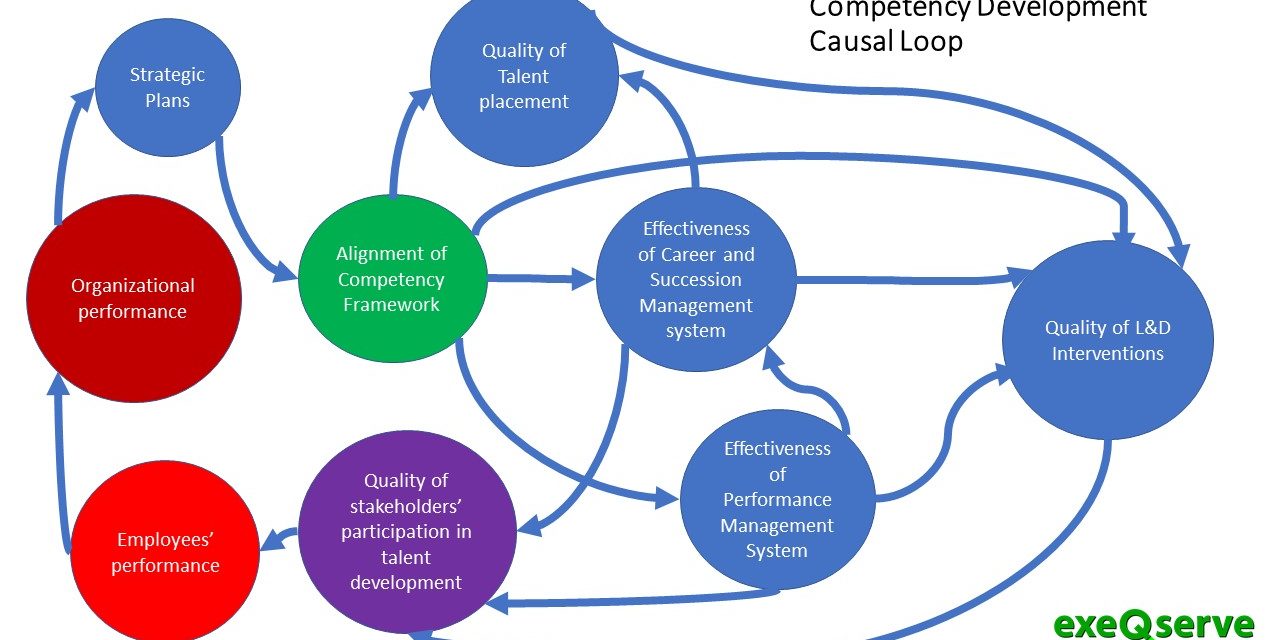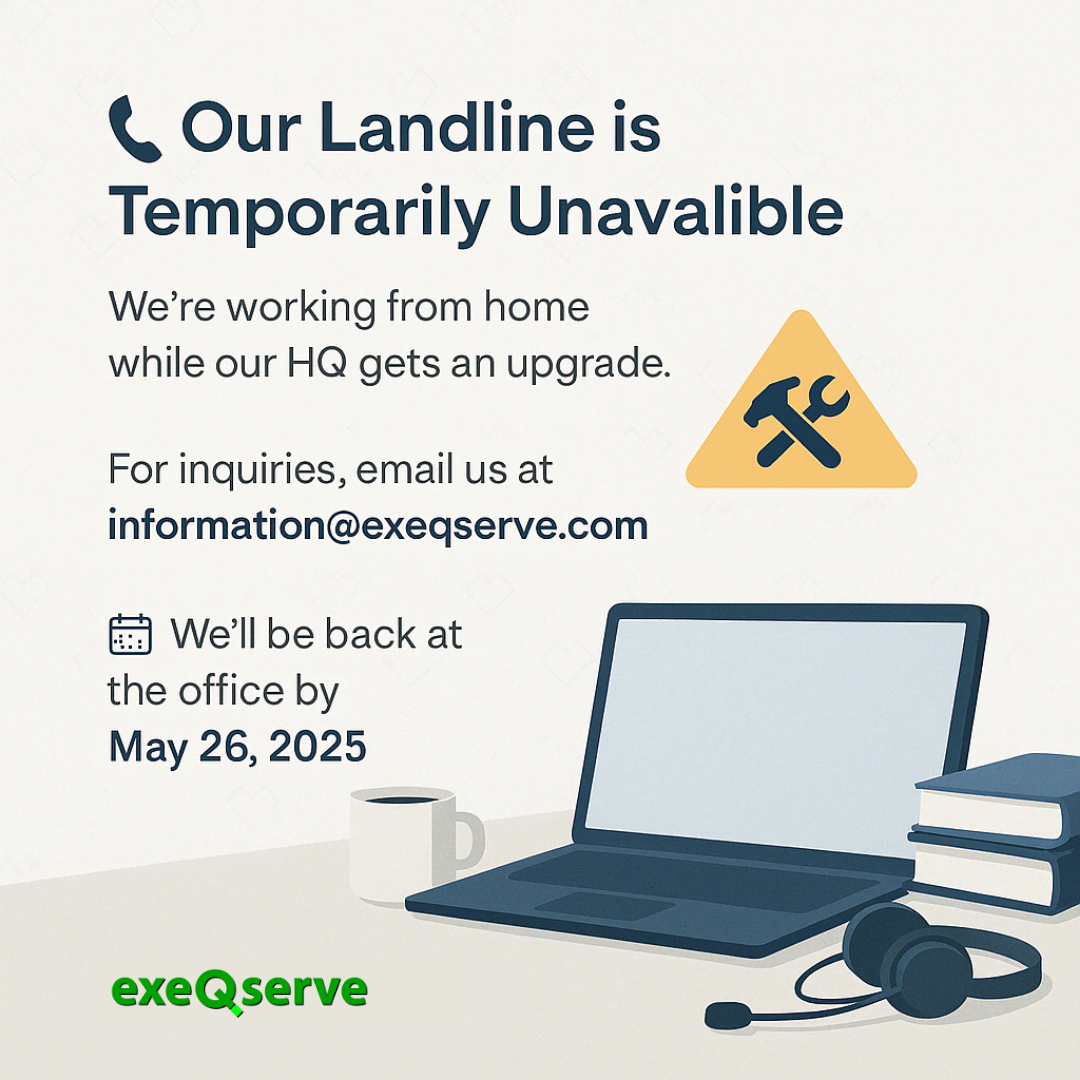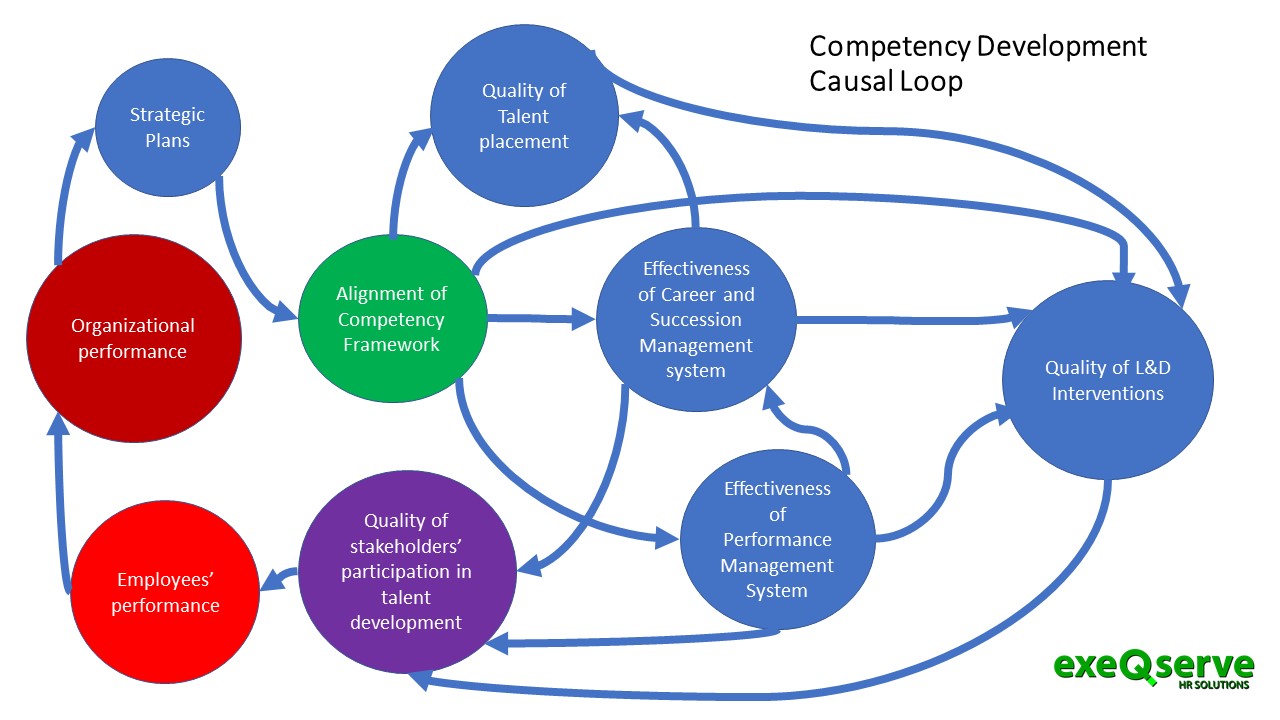 Developing a Competency Framework and using it to implement a Talent Development Strategy is a challenging and worthwhile endeavor. You’ll need a road map if you wish to take this initiative. I am sharing some high level to-do list to get you started based on my experience doing Competency-development work for ExeQserve’s clients.
Developing a Competency Framework and using it to implement a Talent Development Strategy is a challenging and worthwhile endeavor. You’ll need a road map if you wish to take this initiative. I am sharing some high level to-do list to get you started based on my experience doing Competency-development work for ExeQserve’s clients.
Shameless plug, you might want to click on the headers of each subtopic for related programs.
Training is a means, not an end. The end goal of all HR initiatives is engaged, evolved, and improved talents. The whole thing starts at recruitment and branches out to all other areas of people management and development. Many developmental initiatives fail because of misalignment and lack of integration. I often say that a wrong hire cannot be corrected by training. The only way to correct it is to find a more suitable position for the person, which is not the easiest thing in the world to do. Two things make it complicated; first, do you know what competencies are needed to succeed in the job? Second, how do you know as early as possible if the person has the needed competencies or not? If they have some but not all, do they have the potential to develop the missing competencies? That’s three. I should have said three.
As you can plainly see, having a well-written competency profile serves as a blueprint for ideal performance, and serves as a guide for hiring, training, managing performance, managing career, and engaging employees so that they prepare themselves for bigger roles in the organization.
If You are an HR Manager or a Learning and Development Manager who wishes to embark on this endeavor, and don’t know where to start, you are in the right place. Let me share with you some of things you need to learn how to do, so you can put your Competency-based Talent Development Strategy Together.
Step One: Learn the Fundamentals of Competency Development
Competency Frameworks don’t just respond to what is needed to get the job right, it should also be aligned with the strategic direction of the organization. To be able to create your company’s competency model, you have to know your way around developing the following:
- What competency means
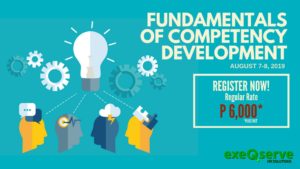
- Types of Competency categories
- How to align competencies with organizational direction
- How to make a competency dictionary
- How to make a competency-based position profile
- How to assess competencies of individuals so you can develop a talent profile
Numbers 5 and 6 connect with other talent development initiatives
Step 2: Develop a Competency-based Recruitment Strategy
 Having a well-written competency profile for positions is a very helpful aid in recruiting and screening candidates. Those who have mastered competency-based recruitment stopped basing their recruitment decisions on academic background and years of experience. They focus more on what the candidates have accomplished believing that past behaviors predict future performance. To be able to do this, you should learn to:
Having a well-written competency profile for positions is a very helpful aid in recruiting and screening candidates. Those who have mastered competency-based recruitment stopped basing their recruitment decisions on academic background and years of experience. They focus more on what the candidates have accomplished believing that past behaviors predict future performance. To be able to do this, you should learn to:
- Use position profiles to prepare recruitment assessment tools
- Behavioral event interviewing
- Reporting screening assessment results that are useful hiring decision-makers
- Identify competency-developmental opportunities that serves as an on-boarding handover responsibility for those who will take over the new employees’ development
Step 3: Develop a Competency-based Performance Management System
 They say feedback is the breakfast of champions. Over the years, the practice of managing performance, became less and less focused on scoring and more and more focused on giving feedback. A competency-based approach provides a great opportunity to provide not just useful feedback but developmental interventions to address gaps. To be able to do this, you have to learn:
They say feedback is the breakfast of champions. Over the years, the practice of managing performance, became less and less focused on scoring and more and more focused on giving feedback. A competency-based approach provides a great opportunity to provide not just useful feedback but developmental interventions to address gaps. To be able to do this, you have to learn:
- The concept of performance management
- How to link competencies with KRA, KPI, Objectives and targets
- How to develop a comprehensive competency-based performance management system.
- How to champion and get buy-in on performance management initiatives
- How to link performance management with learning and development initiatives
Step 4: Develop a Competency-based Learning and Development Strategy
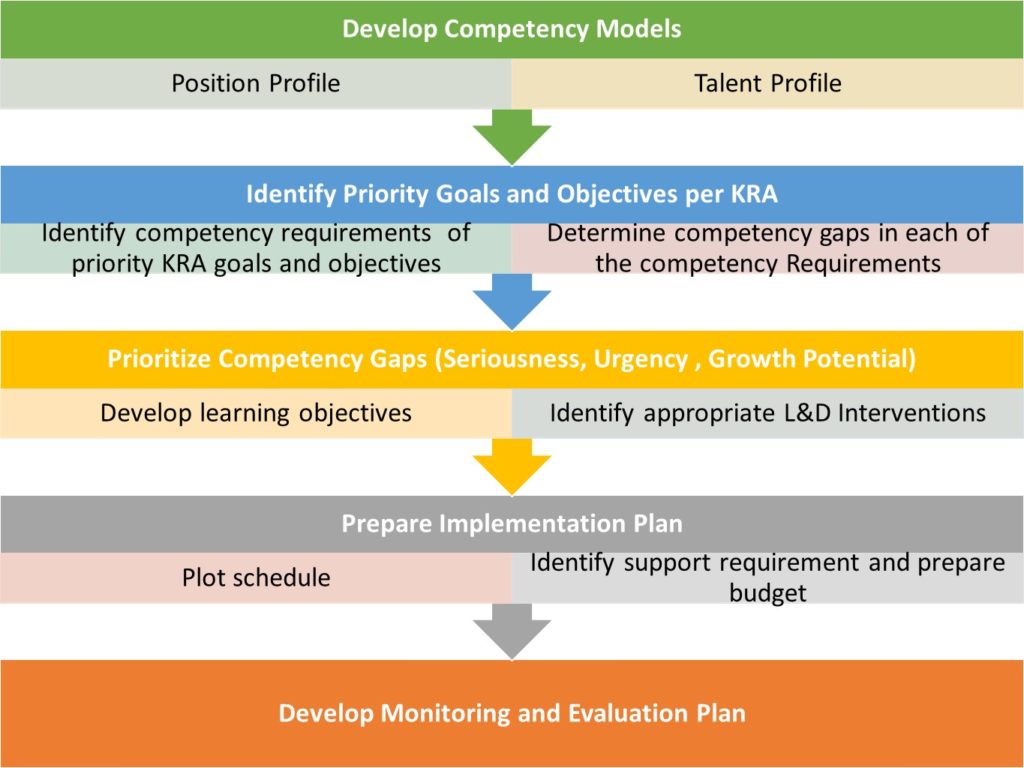 I can never emphasize enough that a good learning and development strategy is a well-designed one. Any kind of design fall apart when the objectives are not clear. Unclear objective means with certainty that the design will be wrong. Developmental interventions should address the competency needs of the job performers. Not all competency gaps can be addressed in the classroom. Not only that, the classroom is not beginning and end of any good developmental intervention. A Learning and development manager who thinks strategically knows this that’s why he/she engages the stakeholders and the whole HR system in the process of talent development through learning and development. For you to do this, you should learn:
I can never emphasize enough that a good learning and development strategy is a well-designed one. Any kind of design fall apart when the objectives are not clear. Unclear objective means with certainty that the design will be wrong. Developmental interventions should address the competency needs of the job performers. Not all competency gaps can be addressed in the classroom. Not only that, the classroom is not beginning and end of any good developmental intervention. A Learning and development manager who thinks strategically knows this that’s why he/she engages the stakeholders and the whole HR system in the process of talent development through learning and development. For you to do this, you should learn:
- Competency gaps assessment
- Training needs analysis
- Training needs analysis reporting
- Competency Development Strategy Formulation and implementation
- Monitoring and Evaluation
- Leadership and management of the Learning and Development Process
Step 5: Develop a Competency-based Career and Succession Management Strategy
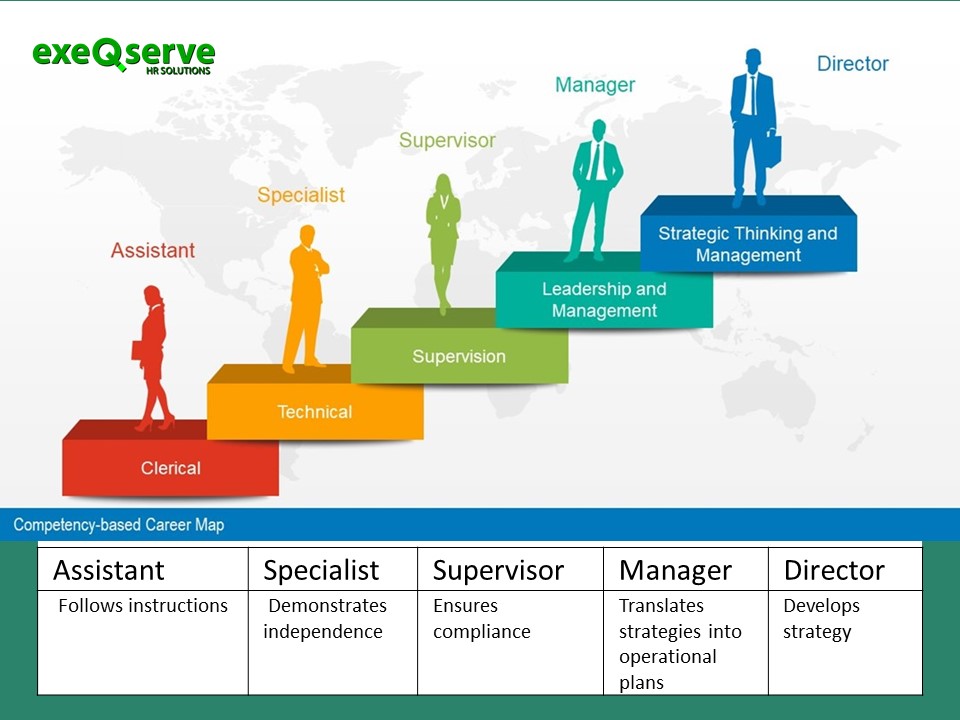 Having a great system for engaging employees to be mindful of their career growth and encouraging them to pursue lofty roles in the organization serves the company in many ways. Engaged employees mean high performance, which leads to productivity and profitability. Engaged employees could mean talent retention which spells stability. Getting employees ready for bigger roles, means a deep bench of ready talent for succession.
Having a great system for engaging employees to be mindful of their career growth and encouraging them to pursue lofty roles in the organization serves the company in many ways. Engaged employees mean high performance, which leads to productivity and profitability. Engaged employees could mean talent retention which spells stability. Getting employees ready for bigger roles, means a deep bench of ready talent for succession.
To prepare yourself for this job, you have to learn how to:
- Develop a Career and Succession Management Program
- Engage stakeholders in activity participating in the development and implementation of the program
- Integrate the competency framework in developing career and succession road map
- Develop tools in developing competencies to ready employees for bigger responsibilities
- Evaluate your career and succession management program.
Keys to success of any HR intervention is change management. This means making sure that your stakeholders have buy-in and are equipped to be committed to the program.
If you need more help developing your competency-based HR strategy, You’d know where to look.
Also, check out ExeQserve’s other programs here.

